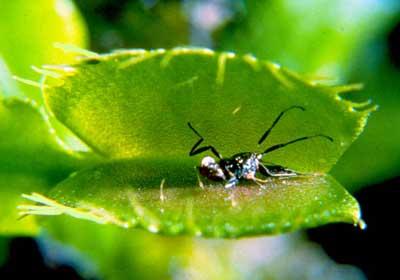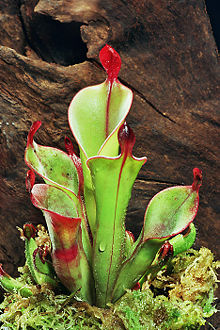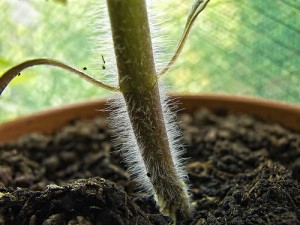We tend to think of plants getting their nutrients from the soil, using their roots to gather all of the necessary elements from the ground. Not all plants do this, though. Some eat flesh!
Carnivorous plants are plants that use nutrients derived from insects or animals in place of, or in addition to, typical soil-based nutrients. They are mostly found growing in areas where the soil nutrients are very low, and so nutrients must be taken from a source other than the soil.
Carnivorous Plants include well known plants such as the Venus Fly Trap, Pitcher Plant and Butterwort. However, carnivorous plants are more abundant than was first thought, recent findings have discovered. Recent additions to the Carnivorous plant family include the tomato plant, potato plant, Petunias ands ornamental tobacco plants. There were also 322 other plants classifies as carnivorous by the Royal Botanical Gardens in Kew.
They catch their prey in a variety of ways.
Five basic trapping mechanisms are found in carnivorous plants:
- Pitfall traps (pitcher plants) trap prey in a rolled leaf that contains a pool of digestive enzymes or bacteria.
- Flypaper traps use a sticky mucilage.
- Snap traps utilize rapid leaf movements.
- Bladder traps suck in prey with a bladder that generates an internal vacuum.
- Lobster-pot traps force prey to move towards a digestive organ with inward-pointing hairs.
The tomato plant uses tiny hairs on its stem to catch small insects. When they die, they fall to the ground and decompose in the soil. The nutrients from the insect are transferred into the soil, and can be extracted by the plant. This is how these plants are able to grow in areas where the level of soil nutrients is very low.
Kew’s head of genetics Dr Mike Fay said that the carnivorous ability of many species had gone unrecognised because they were missing many key characteristics associated with meat-eating plants.
“Widely recognised carnivorous plants number some 650 and we estimate that another 325 or so are probable additions – so an increase of about 50 per cent.” – Kew’s head of genetics, Dr Mike Fay



this website is cool